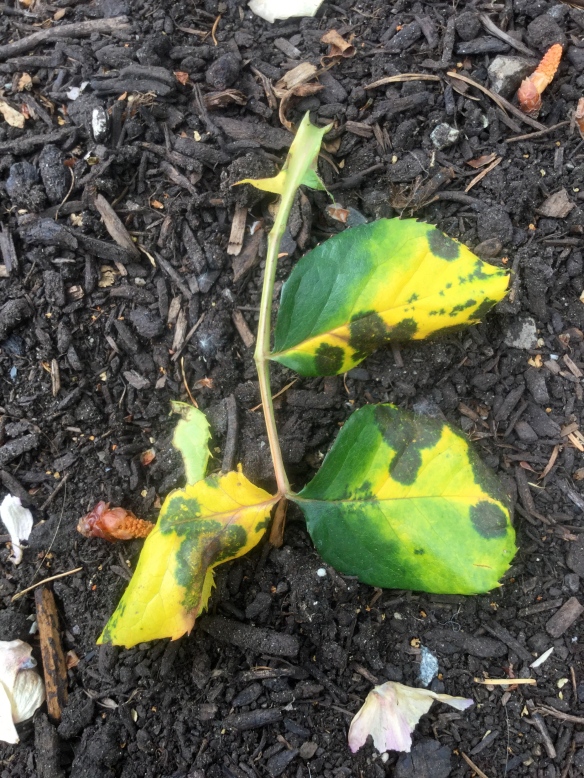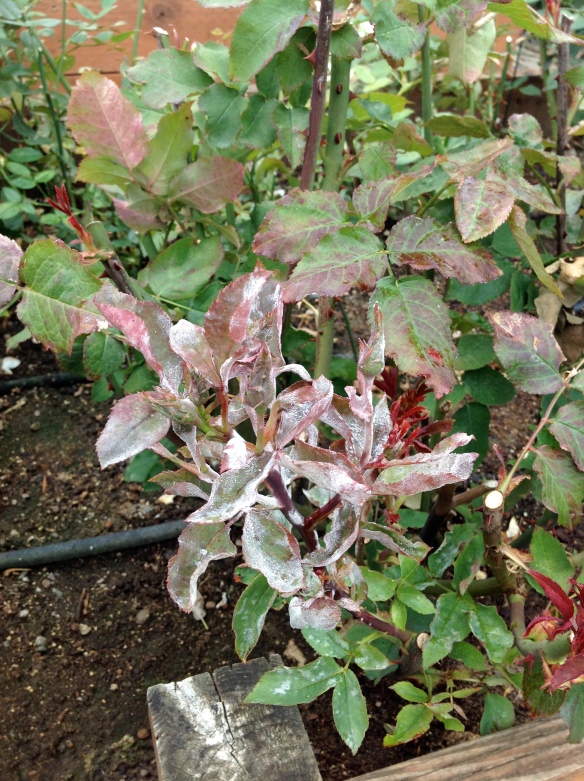Identify the problem with your roses
Before taking any action, be certain that you identify the insect or fungal disease and use the Integrated Pest Management (IPM) approach to a pest free garden. If your roses do not have to be perfect, then you can tolerate a certain amount of insects. If you want exhibition quality roses, then you may have to rely on more chemical control.
Fungal diseases do not go away when no action is taken. Once a leaflet shows disease, it will not go back to the way it was before infection. You can begin by cutting off (not tearing) the infected parts of the bush. If you wait too long, the plant will naturally shed the leaves (defoliate) but in the interim, the fungi spores continue to multiply and blow around your yard.
Below is an example of blackspot

Below is an example of Powdery Mildew

Below are examples of the early infection of Botrytis, also called gray mold

